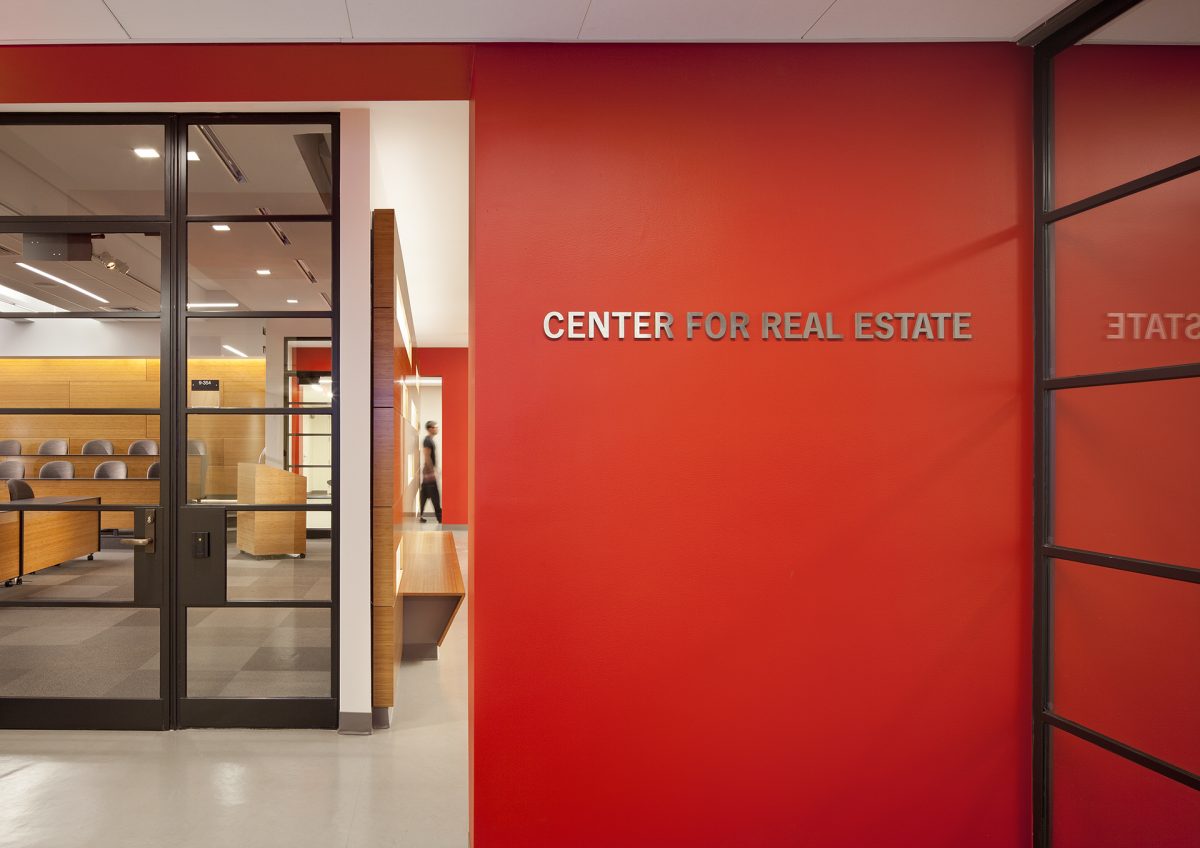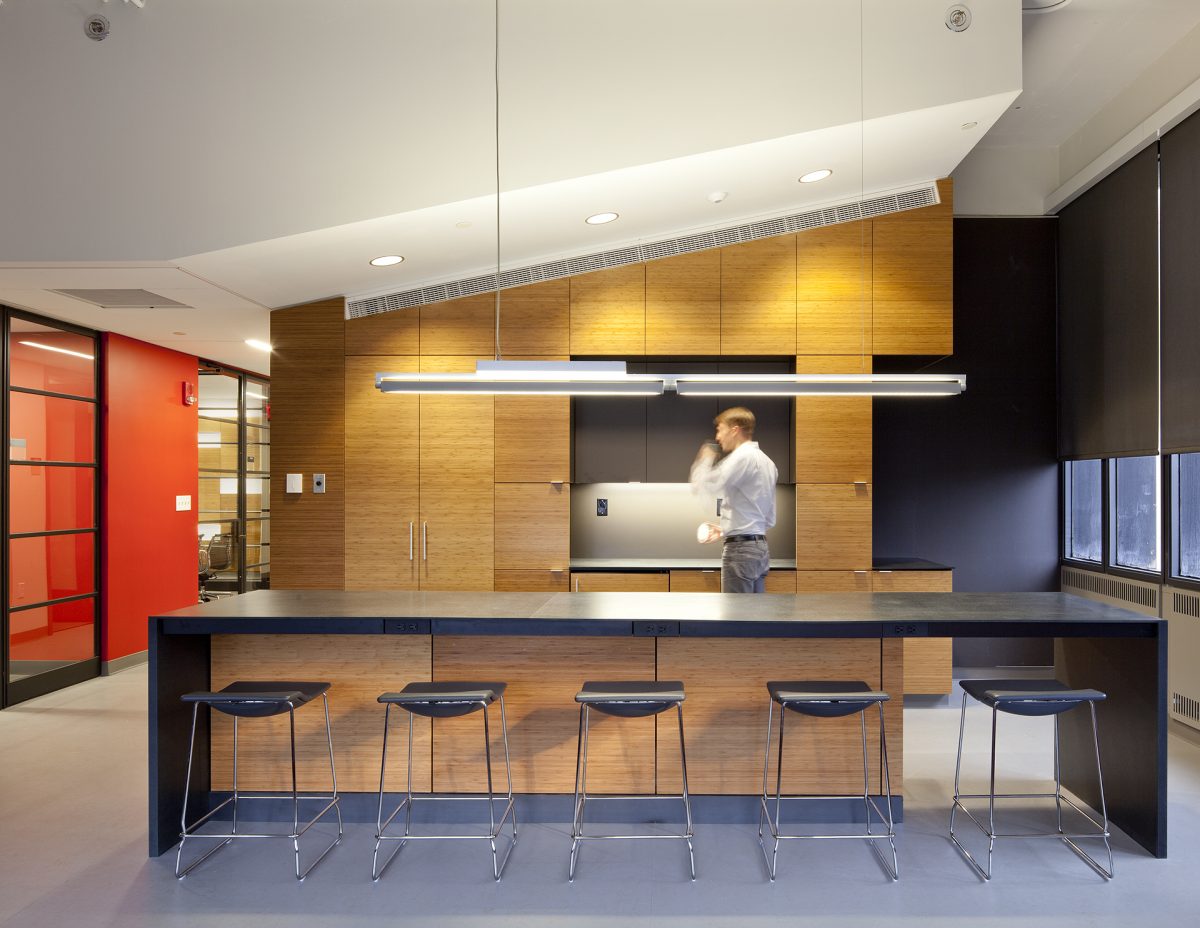MIT Center for Real Estate
MIT Center for Real Estate (MIT/CRE) asked Utile to redesign one floor of a 1960s Skidmore, Owings and Merrill concrete classroom building into their new home. The design, which incorporates lecture rooms, faculty offices, and student study and lounge spaces, restores the original concept for the arrangement of rooms—a central core of classrooms with small offices lining the perimeter—which had been muddied by 40-plus years of piecemeal renovation. Strategically positioned glass walls open up the landlocked lecture and classroom spaces to light and views, resulting in rooms that feel much more spacious than their small footprints. Red paint coats the core walls that ring the classrooms and a 64-seat lecture space. Bamboo paneling lines the interior of this lecture hall, which also features custom bamboo desks with recycled paper countertops. This simple palette of rapidly renewable and recycled materials—bamboo and recycled paper—is also employed for custom millwork in the reception area and student lounge.
2012 Boston Society of Architects Design Award for Interior Architecture / Interior Design



